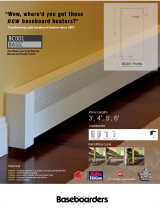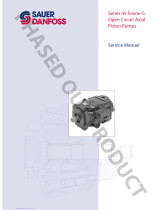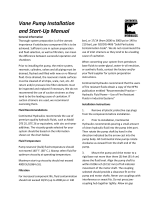
General Information
Basic Design........................................................................................................................................................................................4
Key Features....................................................................................................................................................................................... 5
System Circuit Diagram..................................................................................................................................................................5
Schematic Diagrams........................................................................................................................................................................6
Technical Specifications
Overview..............................................................................................................................................................................................7
Features and Options......................................................................................................................................................................7
Specifications.....................................................................................................................................................................................7
Operating Parameters.....................................................................................................................................................................7
Fluid Specifications..........................................................................................................................................................................8
Operating Parameters
Fluids.....................................................................................................................................................................................................9
Viscosity............................................................................................................................................................................................... 9
Temperature.......................................................................................................................................................................................9
Charge Pressure/Open Circuit Operation................................................................................................................................9
Case Pressure...................................................................................................................................................................................10
Shift Pressure...................................................................................................................................................................................10
System Pressure..............................................................................................................................................................................10
Input Speed......................................................................................................................................................................................11
System Design Parameters
Installation........................................................................................................................................................................................12
Filtration............................................................................................................................................................................................12
Reservoir............................................................................................................................................................................................12
Overpressure Protection............................................................................................................................................................. 12
Loop Flushing..................................................................................................................................................................................12
Charge Flow.....................................................................................................................................................................................13
Charge Pressure / Open Circuit Operation........................................................................................................................... 13
Redundant Braking System Requirement.............................................................................................................................13
Series Operation.............................................................................................................................................................................13
Shaft Loads.......................................................................................................................................................................................13
Radial load formula..................................................................................................................................................................14
Duty Cycle and Bearing Life....................................................................................................................................................... 14
Hydraulic Equations Helpful for Motor Selection...............................................................................................................14
Name Plate....................................................................................................................................................................................... 15
Product Coding
Model Code......................................................................................................................................................................................17
Features and Options
Speed Sensor...................................................................................................................................................................................20
Shaft Torque.....................................................................................................................................................................................20
Output Shafts.................................................................................................................................................................................. 21
Loop Flushing..................................................................................................................................................................................25
Anti-Cavitation Valve Option.....................................................................................................................................................26
Dust Seal Option.............................................................................................................................................................................27
Displacement Limiters................................................................................................................................................................. 27
Motor Rotation................................................................................................................................................................................28
Controls............................................................................................................................................................................................. 28
Brake Release Port (cartridge motors)....................................................................................................................................28
Installation Drawings
SAE-B Mount (LV/KV).................................................................................................................................................................... 29
Cartridge (LC/KC)............................................................................................................................................................................34
Technical Information
L and K Frame Variable Motors
Contents
©
Danfoss | February 2020 BC161386484850en-000307 | 3






















